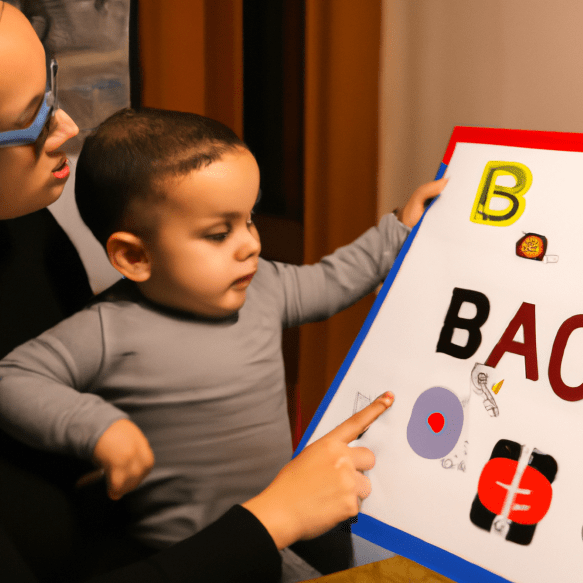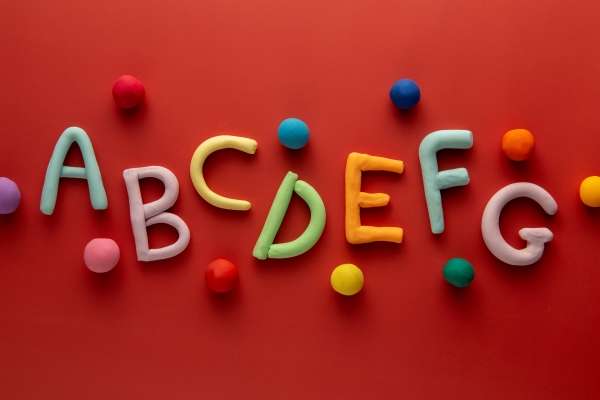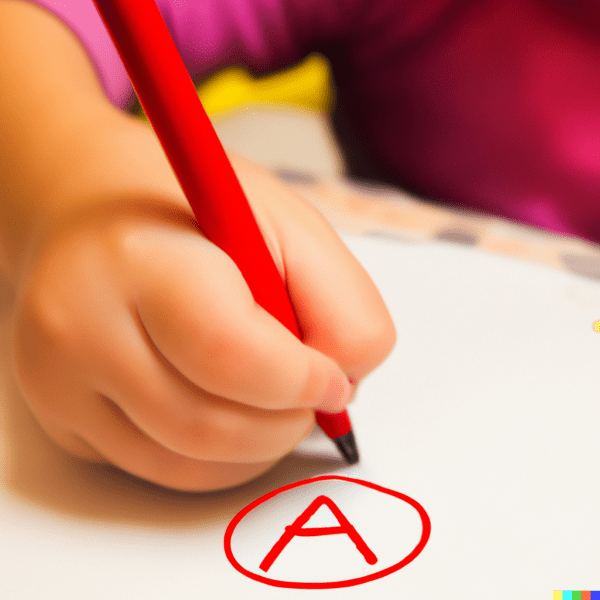Sounding out words is a crucial stepping stone in a child’s journey to reading fluency. Witnessing that spark of recognition when a child deciphers a word for the first time is a joyous experience for both parent and child. This process of assembling letters into words and words into sentences paves the way for an unending exploration of knowledge and boundless imagination.
As a parent, you are the key guide on this transformative journey. Yet, the question arises: how can we best support our children in this endeavor? How can we make the process of sounding out words an enjoyable and less daunting task for them?
This guide aims to equip you with practical techniques and strategies to effectively help your child in mastering the art of sounding out words. Let’s begin this exciting adventure of guiding our little ones to uncover the magic hidden in words.
Understanding the Basics of Sounding Out Words

Before we discuss ways to help your child with sounding out words, it’s important to understand the basics. In the early stages of learning to read, your child will be introduced to the world of phonics and phonemic awareness. Phonics is the connection between letters and the sounds they represent, while phonemic awareness is the understanding that words are made up of individual sounds. Together, they form the basis for sounding out words.
This leads us to decoding – another essential skill in early reading. Decoding is the ability to apply one’s knowledge of letter-sound relationships to correctly pronounce written words. A child who can decode efficiently can identify words quickly and has more cognitive resources available for comprehension.
The alphabetic principle, which is the understanding that letters and letter combinations represent individual phonemes in written words, plays a significant role in helping children learn to sound out words.
Ways to Help Your Child with Sounding Out Words
Blending Sounds
Absolutely, let’s unpack this together. Sounding out words, also known as phonics, is an important stepping stone in your child’s journey toward reading fluency. Picture it as assembling an intriguing puzzle of sounds. Take the word “dog”, for instance. Break it down into its individual sounds – “d”, “o”, “g”. As a caring and diligent parent, your role is guiding your child to combine these sounds to form the familiar word “dog”.
This practice begins with straightforward, short words. As their confidence grows, you can venture into longer, more complex words. It’s a playful and educational exercise in blending sounds, easily made into a fun game that both of you can enjoy. With regular practice, you’ll find your child’s vocabulary expanding and their comprehension deepening. Your role in this journey is invaluable – a mix of patience, practice, and positive reinforcement.
In essence, you’re fostering an environment for your child to succeed in mastering the art of sounding out words. Together, you can transform learning into an exciting adventure!
Segmenting Words into Individual Sounds
Isn’t it fascinating how words are just like puzzles? Take the word “sun”. It’s a great example of how to segment words into individual sounds. Imagine the joy your child feels when they realize the word “sun” can be separated into “s”, “u”, and “n”. This method really simplifies how words are constructed. How can you make this more engaging?
To make it even more interactive, consider turning this into a game of clapping or jumping for each sound. Picture your child hopping three times, one for each sound in “sun”. These simple yet playful activities are a sure way to help your child grasp the concept of segmenting words.
This journey of segmenting words is not just educational but also fun. With your gentle guidance and these enjoyable activities, your child will grasp the concept of breaking down words into sounds, making their reading journey smoother.
Word Families and CVC Words
Just like a family shares common traits, so do some words. This group of words that share common features is called ‘word families’. Additionally, there are CVC words, which stand for Consonant-Vowel-Consonant. Easy examples include “cat”, “bed”, or “sit”.
Now, here’s the interesting part. These words are some of the simplest for your child to sound out because they follow a straightforward structure. When your child recognizes a word family or a CVC word, they can use that knowledge to sound out similar words. For instance, if they know how to read ‘cat’, they can apply the same pattern to read ‘hat’, ‘bat’, or ‘rat’ from the same word family.

By encouraging your child to identify these word families and CVC words, you’re actually equipping them with a powerful tool for sounding out words.
Sight Words
Sight words can be a powerful tool in helping your child with sounding out words. Here’s how:
Sight words are words that frequently appear in texts and should ideally be recognized instantly, without sounding out. Words like “the”, “are”, and “you” are good examples.
To start, create a list of sight words and introduce them to your child. Flashcards can be helpful here. Go through them regularly, aiming for immediate recognition.
The beauty of sight words is that they give your child an instant grasp of common words, reducing the need for sounding out and speeding up reading. This, in turn, boosts their confidence and frees up their mental energy for tackling unfamiliar words.
But remember, the goal isn’t just to memorize these words but to recognize them in a snap while reading. Encourage your child to point out sight words when they come across them in a book or while reading other materials. Over time, this repeated exposure and recognition practice will help your child improve their sounding out skills and overall reading fluency.
Onset and Rime
Start by understanding the two parts of a syllable – the ‘onset’ and the ‘rime’. The onset is the initial consonant sound, while the rime is the rest of the syllable, including the vowel and any consonant sounds after it. For example, in the word ‘cat’, ‘c’ is the onset and ‘at’ is the rime.
Choose a simple one-syllable word that your child is familiar with. For this exercise, we’ll use ‘cat’.
Show your child how to separate the word into its onset and rime. In our example, that would be ‘c’ and ‘at’.
Have your child sound out the onset (‘c’) and then the rime (‘at’). Encourage them to say these sounds out loud.
Next, have your child blend the onset and rime back together to form the word. In our example, ‘c’ + ‘at’ = ‘cat’.
Repeat the process with other words. Keep the rime consistent at first (‘at’), but change the onset to form new words, like ‘bat’, ‘rat’, ‘hat’, etc.
With this approach, your child’s journey of sounding out words becomes more systematic, manageable, and fun. It’s all about helping them read more smoothly, one syllable at a time.
Sound Manipulation
Imagine playing with building blocks, but instead of blocks, we’re using sounds. Fun, right? This game is called sound manipulation, and it’s a wonderful way to help your child become better at sounding out words.
Sound manipulation involves adding, deleting, or substituting sounds in simple words. For instance, if we start with the word “cat” and change the first sound from “c” to “b”, we get a new word – “bat”. Similarly, removing the “c” from “cat” gives us “at”, and adding an “s” at the end transforms “cat” into “cats”.
As simple as this game may seem, it’s an effective strategy to make your child a more flexible thinker. Not only does it help with sounding out words, but it also boosts reading skills by training their brains to see the possibilities within words. With regular practice of this playful exercise, your child will soon be a word-wizard, juggling sounds like a pro! And that is what we want.
Syllables
Imagine words as little trains, each with a series of cars connected together. In the world of reading, we call these cars ‘syllables’. They are the ‘beats’ or pulses in a word, and understanding them can do wonders for your child when it comes to sounding out words.
Let’s take a simple example, the word ‘butterfly’. Instead of looking at it as a big, long word, we can break it down into ‘butter’ and ‘fly’ – two syllables that make the task of sounding out the word much more manageable for your child.
When your child understands how to identify these syllables, they can use this strategy to tackle any new word they come across. It’s like breaking a large task into smaller, manageable parts. With this skill in their reading toolkit, your child will be more confident in sounding out words, turning the task of reading into a fun and enjoyable experience.
Making Sounding Out Words Fun: Engaging Activities and Tools

Ever thought of turning sounding out words into a game? With a little creativity, we can make this learning process fun and engaging for your child.
Interactive games are always a hit. Think of a simple game where your child sounds out words to win points. Use flashcards with pictures on one side and words on the other, then challenge your child to sound out the word that matches the picture.
How about getting hands-on? Try multi-sensory activities like writing words in sand or shaping letters with playdough. These methods not only make learning fun but also engage different senses, reinforcing the learning process.
And let’s not forget the treasure trove of resources available to us today. Countless books and apps focus on phonics and sounding out words. They offer engaging activities that can turn your child into a confident word detective.
Remember, when learning becomes fun, it’s no longer a chore but a delightful adventure.
The Role of Letter Recognition in Sounding Out Words
Imagine trying to cook without recognizing the ingredients. Difficult, isn’t it? Similarly, sounding out words begins with recognizing the letters. It’s the essential first step in this reading recipe.
A child who quickly identifies letters will naturally find it easier to learn their sounds. For example, recognizing the letter ‘b’ paves the way to understanding that it makes the ‘buh’ sound in words like ‘bat’ and ‘ball’.
To strengthen your child’s letter recognition skills, immerse them in letter-filled activities.
Think of alphabet puzzles, where each piece is a letter that fits into its unique spot. Or, how about letter tracing? This fun, hands-on activity not only helps recognize letters but also imprints their shapes in your child’s mind.
By making letters their buddies, your child will be well-equipped to tackle the exciting task of sounding out words. It’s the foundation that supports their journey into the magical world of reading.

Conclusion
Guiding your child on this path is a gift that keeps on giving. It elevates their confidence, kindles a lifelong love for reading, and lays a robust groundwork for their future education.
Remember, every child learns at their own pace. So, be patient. Take your time. Relish each moment of discovery and joy as your child uncovers the mysteries of each word. It’s not just about reaching the destination but also about enjoying the scenic route filled with ‘a’s and ‘b’s, ‘c’s and ‘z’s.
Together, you and your child will embark on countless adventures, all hidden within the lines of a book. Here’s to making each word a step towards a world filled with knowledge. Here’s to the joy of reading. Happy reading to you and your little explorer!





